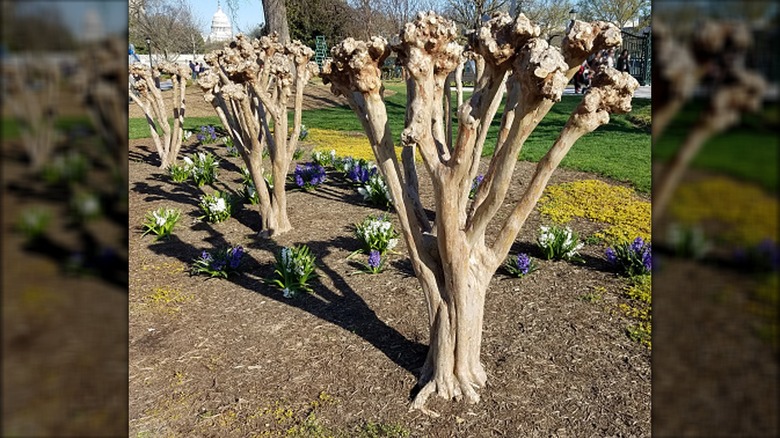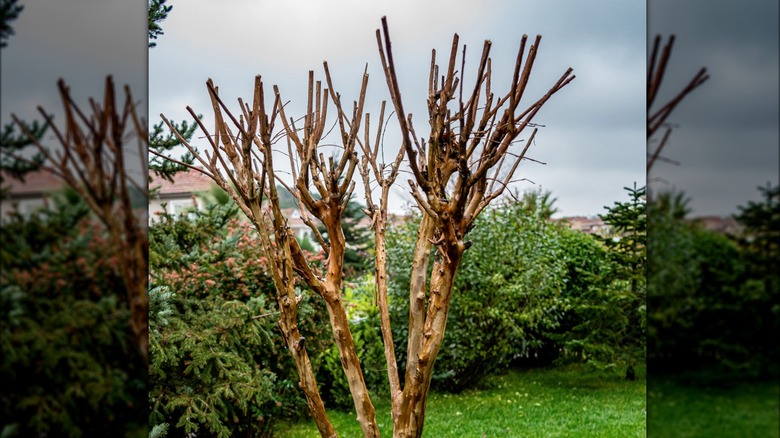It sounds like an exciting headline, “Crepe Murder: A Story of Destruction and Ruin.” Unfortunately, this tale is all too true, even if it is a little over dramatic. If you live in an area where crepe myrtles are common in home and commercial landscapes, you have probably seen evidence of this crime of pruning. Home gardeners and professional landscapers alike are guilty of crepe murder, an anecdotal expression for trimming crepe myrtles in a way that results in knobby tops that get worse every year.
Crepe myrtles grow in warm climates from USDA zone 6 to 10. Although they are native to China, they have become a staple in southern landscapes thanks to their stunning show of bright blooms that last through the heat of summer. Once established, crepe myrtles are exceptionally low maintenance, tolerating drought and lean soils. Even pruning isn’t an absolute necessity -– they will grow as a bush and continue to produce blooms –- but to create the most beautiful display, prune your crepe myrtles in February before they break dormancy. Just be sure to avoid crepe murder.
How to commit crepe murder

Crepe myrtles bloom on new wood, so they produce new branches each year. In late winter, the previous year’s branches can be pruned off, which will help encourage the plant to put its energy into new growth for even more prolific blooms. Crepe murder is the result of cutting the tops of crepe myrtles off at the exact same height. This can happen using loppers, but it usually involves a chainsaw or similar power tool to expedite the process. This makes quick work of crepe myrtle pruning for professional landscapers, and the process itself doesn’t sound like it should be a problem –- and it isn’t unless it is done repeatedly.
Each time a crepe myrtle is pruned, it leaves a spot like a scar, like any other tree. Those scars heal over and the tree produces more branches. But if the branches are cut in the same place every year, the result is a cluster of knobby scars at the top of each main trunk. These damaged tops are unable to produce branches strong enough to support masses of flowers. And, when the trees lose their leaves in the winter, those knobby tops are very visible. Although you planted crepe myrtles for their beauty, their winter appearance will have the opposite effect, showing grotesque, mangled tops rather than elegant, dormant branches.
Recovering from crepe murder

If your tree has already been the victim of crepe murder, take heart. It may take a few years to fully recover but you can start the process by cutting it below the knobby tops, where it will produce new growth. When it is time to prune, cut last year’s growth back by about 2 feet, removing any damaged or crossing branches. By repeating this process for a few years, your crepe myrtle will regain its natural shape and will look tidy — not butchered — after pruning.
These pruning rules apply to species of crepe myrtles that are trees, some of which grow up to around 20 feet tall. Large tree and semi-dwarf varieties (which reach about 10 feet at maturity) should be pruned each year to retain their size and shape and to promote more blooms. Dwarf species are bushes that only reach about 4 feet tall. These varieties only require pruning to remove spent blooms and damaged branches, so they should never suffer the terrible crime of crepe murder.



